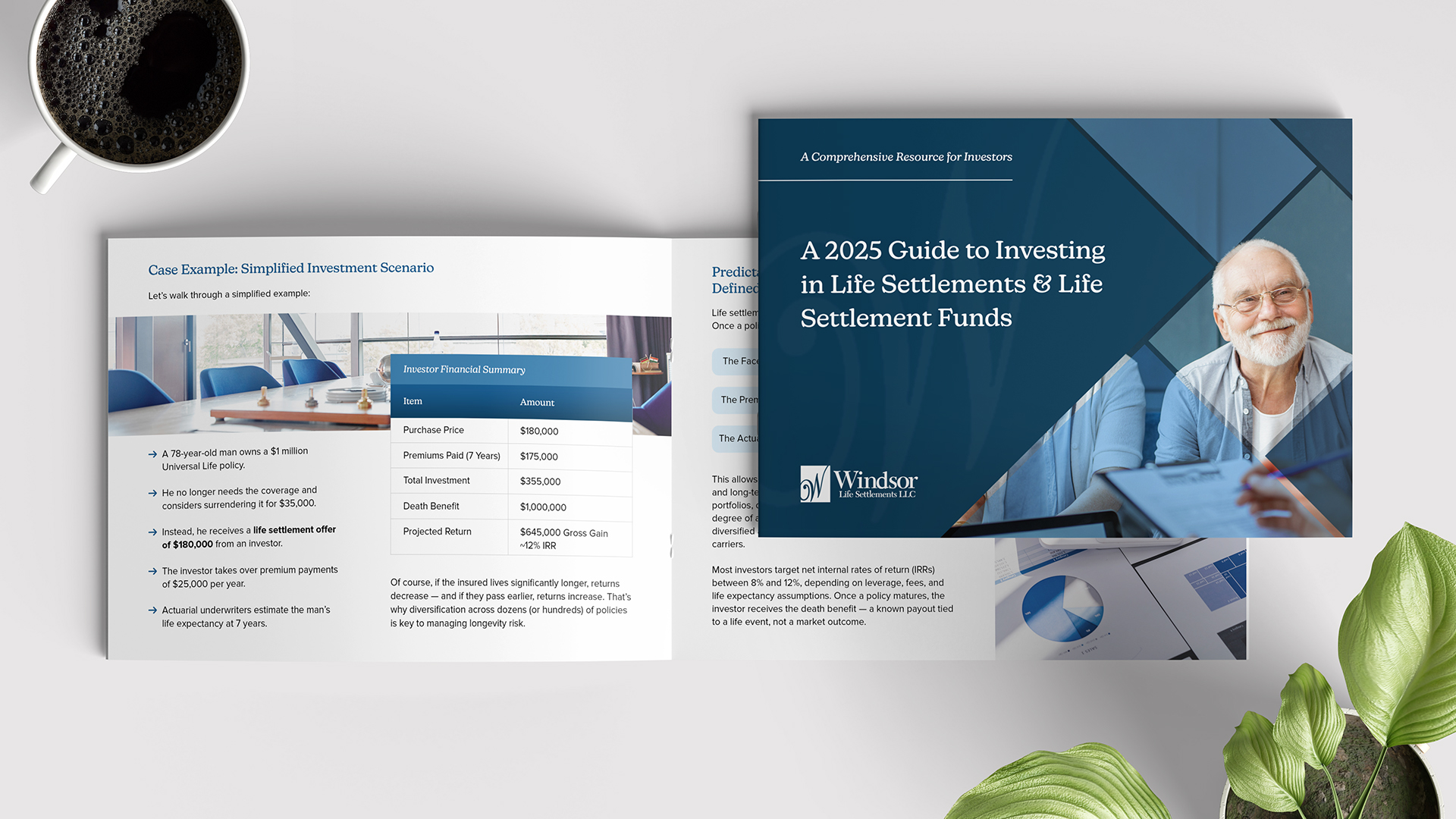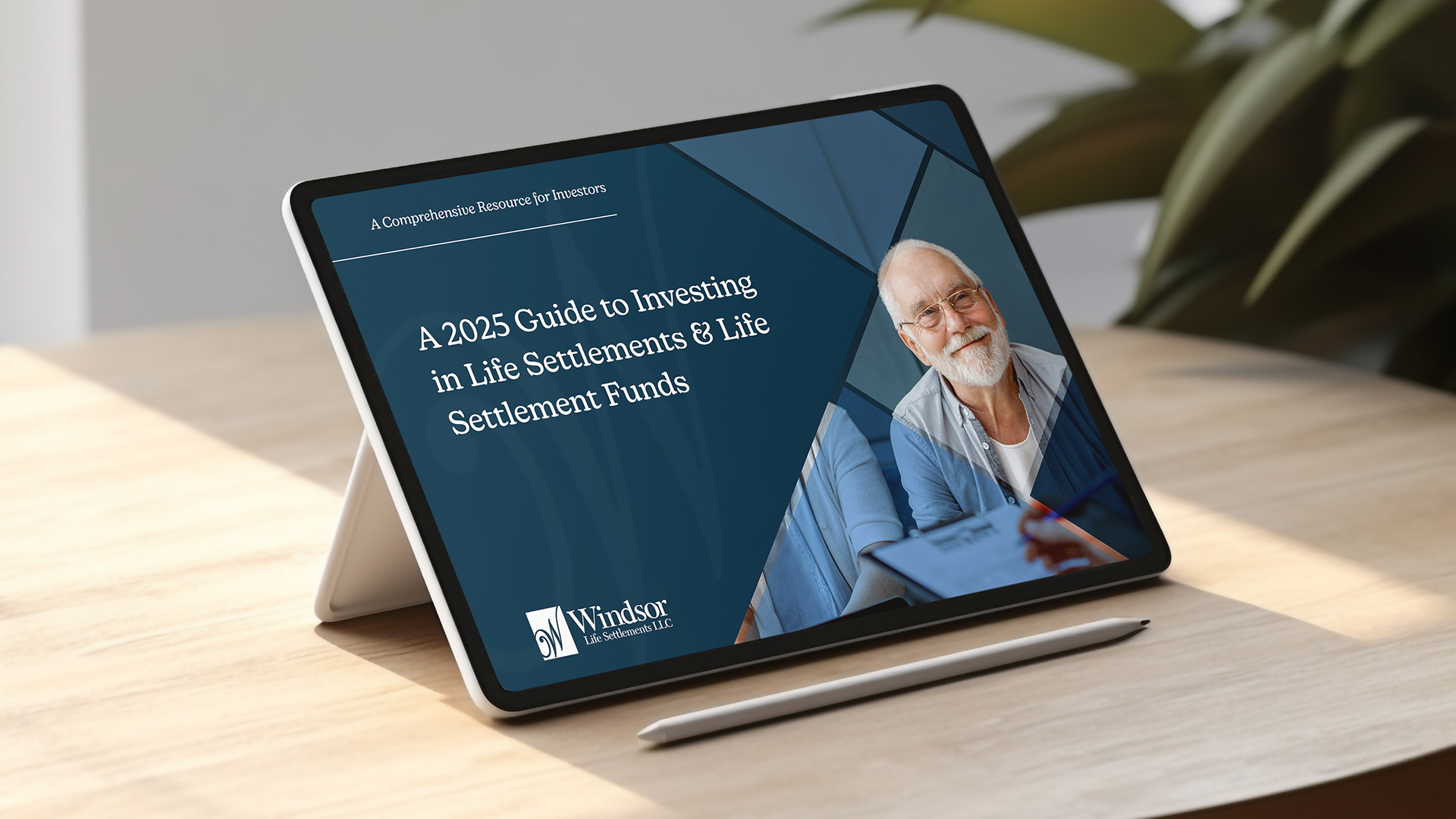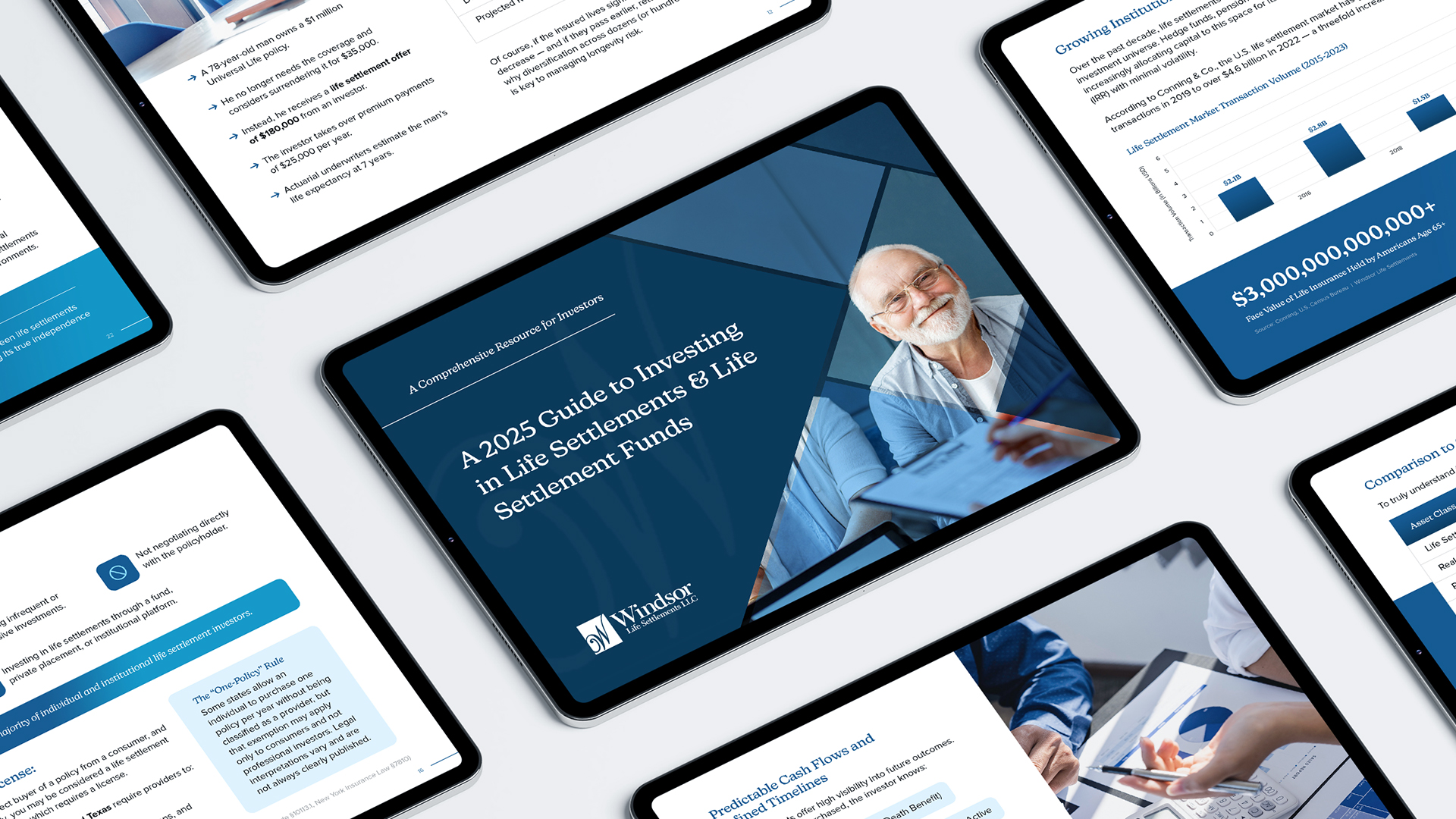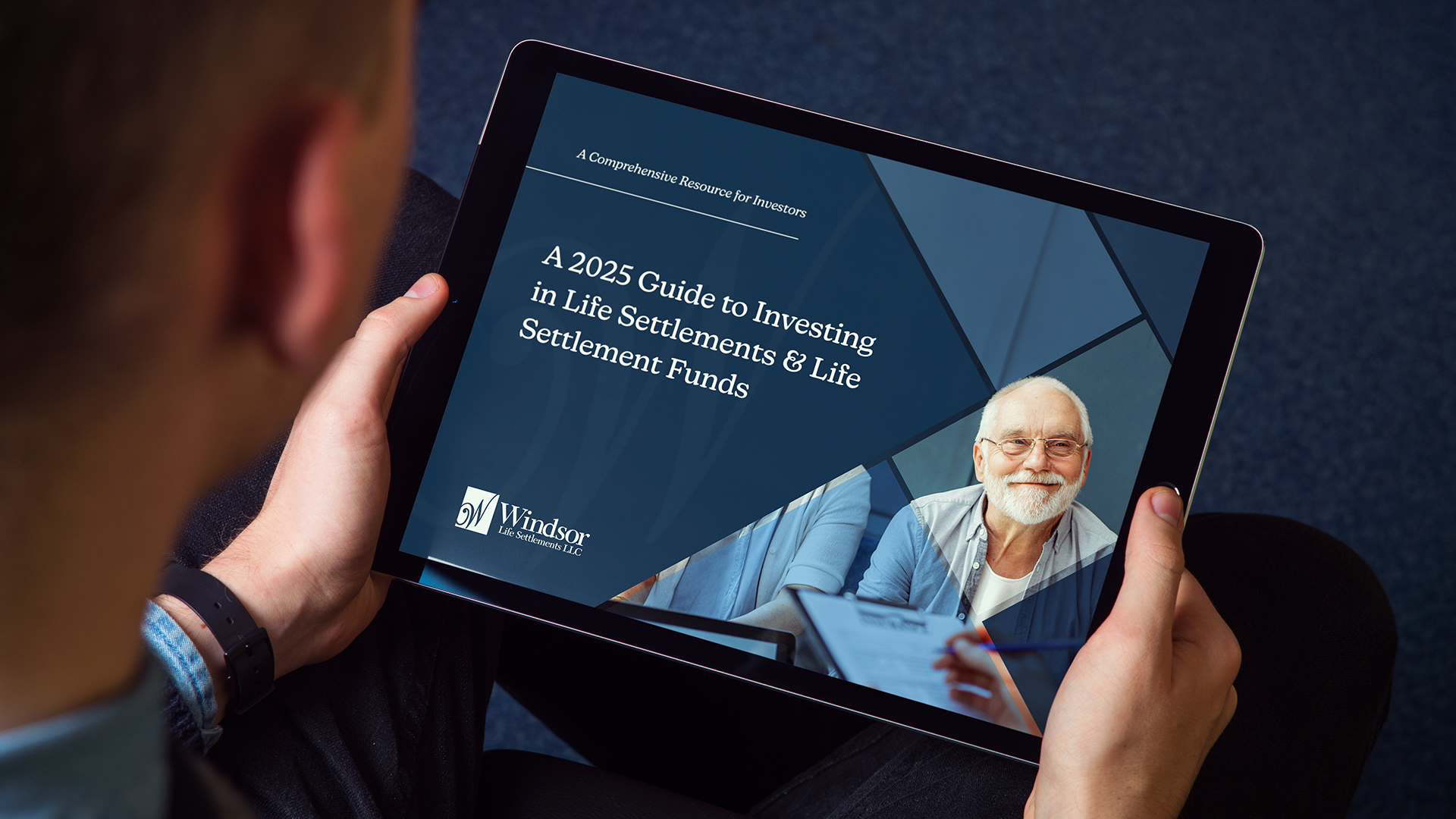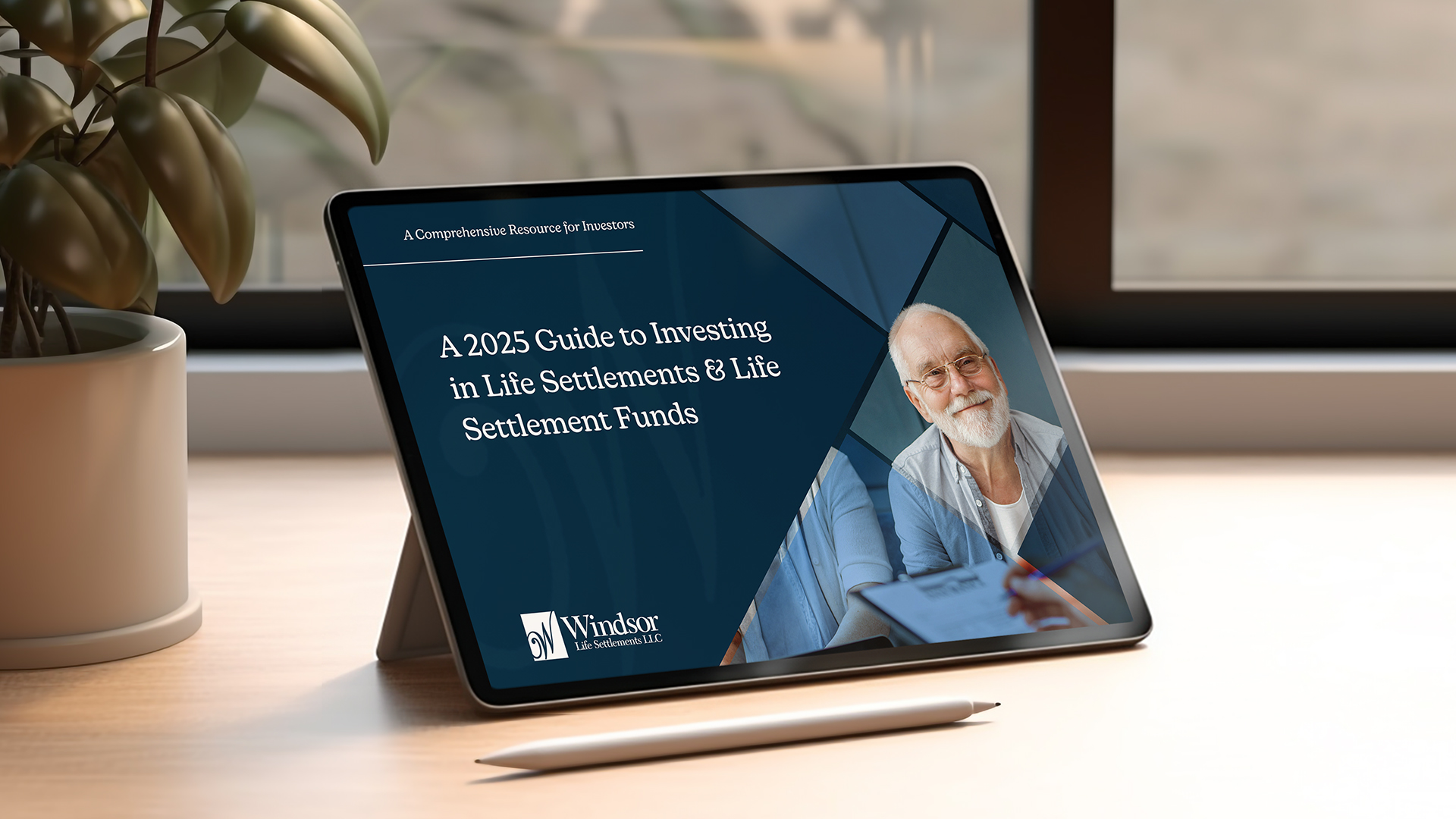Earn passive income from a high-yield asset immune to market swings
8-12%
Net Annuaized Returns
$3 trillion
Policies held By Seniors
1.5+
Sharpe Ratios
New eBook!
A 2025 Guide To Investing in Life Settlements & Life Settlement Funds
The express lane to passive income from life settlement investments.
Invest with confidence.
a path to fixed income
payout is known, cost is fixed, timing is probable
Hedge Uncertainty
not linked to stocks, rates, or real estate.
Regulated Product
Overseen By the Department Of Insurance in 43 states
used by institutions
Harvard, Credit Suisse, and Berkshire Hathaway
Off-Market Advantage
Step outside the chaos of public markets
In 2022, amid global market turmoil, life settlement investments reported positive single-digit returns, while the S&P 500 declined over 18%.
Keep It Online.
Read and bookmark each chapter of our investor guide online.
Chapter 1: No Stocks, No Stress: Life Settlements Offer Calm in a Volatile Market
Life settlements are often considered alternative investments. However few investment opportunities combine...
Chapter 2: Do I Need to Be Licensed or Certified to Buy Policies?
The answer depends on how you intend to invest — and whether...
Chapter 3: The Case For Investing In Life Settlements Long Term
Life settlements offer a unique alternative — one that delivers consistent performance,...
Chapter 4: What Are the Risks of Investing in Life Settlements?
Life settlements are not risk-free — but their risks are defined, modelable,...
Chapter 5: What Have the Returns Been for the Last 10 Years?
Life settlements have become one of the most compelling non-correlated investments in...
Chapter 6: What Are the Advantages of Working With a Life Settlement Broker?
In the life settlement industry, navigating the secondary market for life insurance...
Commonly Asked Questions
You’re purchasing the legal right to receive the death benefit of a life insurance policy. In exchange, you take over premium payments and become the policy’s beneficiary. Your return is realized when the insured passes away and the benefit is paid out.
Life settlements are uncorrelated to traditional markets and can offer double-digit returns, often in the range of 8% to 14% IRR—depending on longevity risk, policy structure, and premium outlays.
Life settlement investments are illiquid and long-term in nature. Holding periods vary, but most investors see payouts within 3 to 10 years, depending on the insured’s life expectancy.
The largest risk is longevity risk—if the insured lives longer than expected, your return declines. There’s also regulatory risk, premium cost increases, and carrier credit risk. Mitigation requires sound underwriting and active management.
Licensed medical underwriters assess the insured’s health records and history to produce a life expectancy report. Most investors rely on multiple LE providers to triangulate a more reliable projection.
Absolutely—and you should. Just like a stock portfolio, diversification helps reduce concentration risk. A well-balanced portfolio spreads exposure across ages, health conditions, policy sizes, and insurance carriers.
Not directly. Life settlements are largely uncorrelated to the stock market, interest rate shifts, or geopolitical noise. They’re driven by mortality tables and insurance contract law—making them attractive during economic uncertainty.
Professional servicing companies are retained to handle premium payments, carrier correspondence, and death benefit collection. Investors are typically updated regularly through reporting dashboards or fund managers.
Yes, life settlements are regulated at the state level, with oversight from insurance departments. Approximately 43 states have legislation in place to protect both policy sellers and investors. Reputable providers operate within these frameworks.
Life settlement gains are typically taxed as ordinary income, not capital gains. However, tax treatment can vary depending on fund structure and investor domicile. Always consult a qualified tax advisor.

